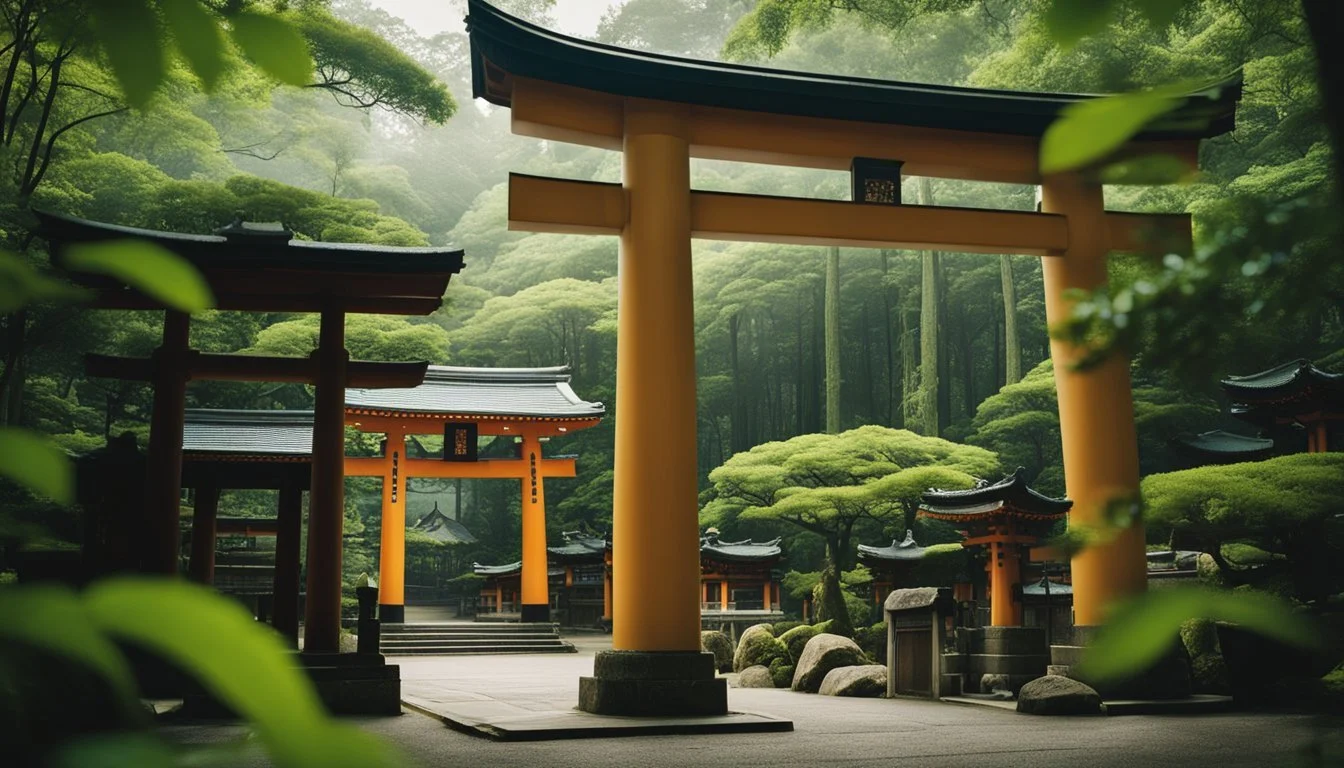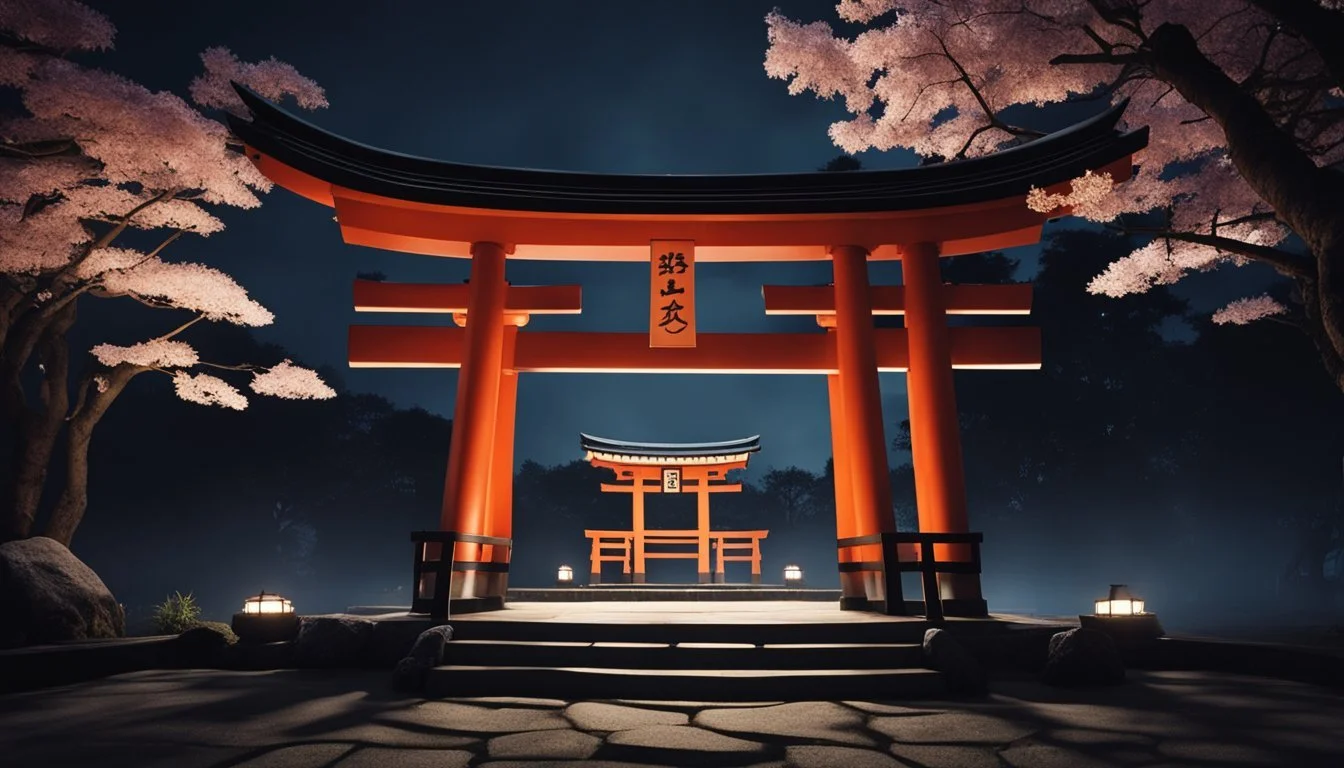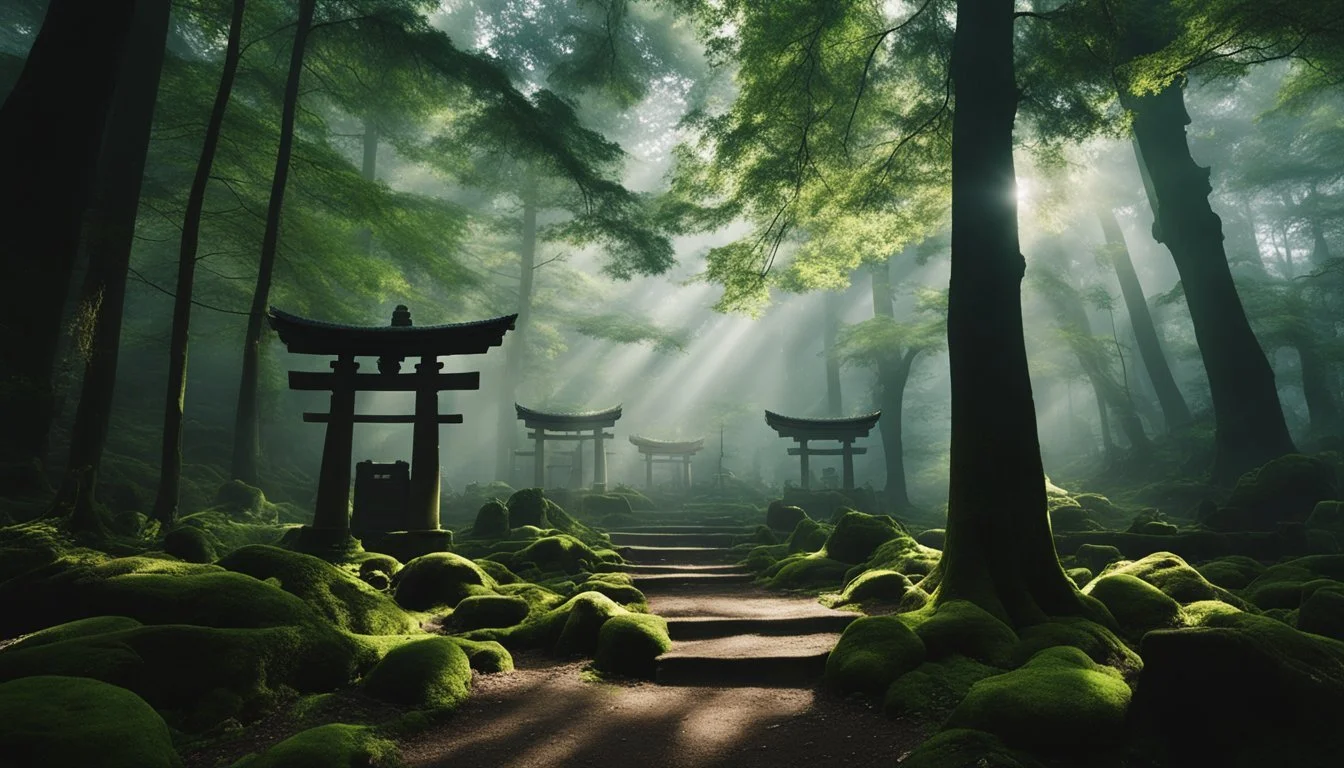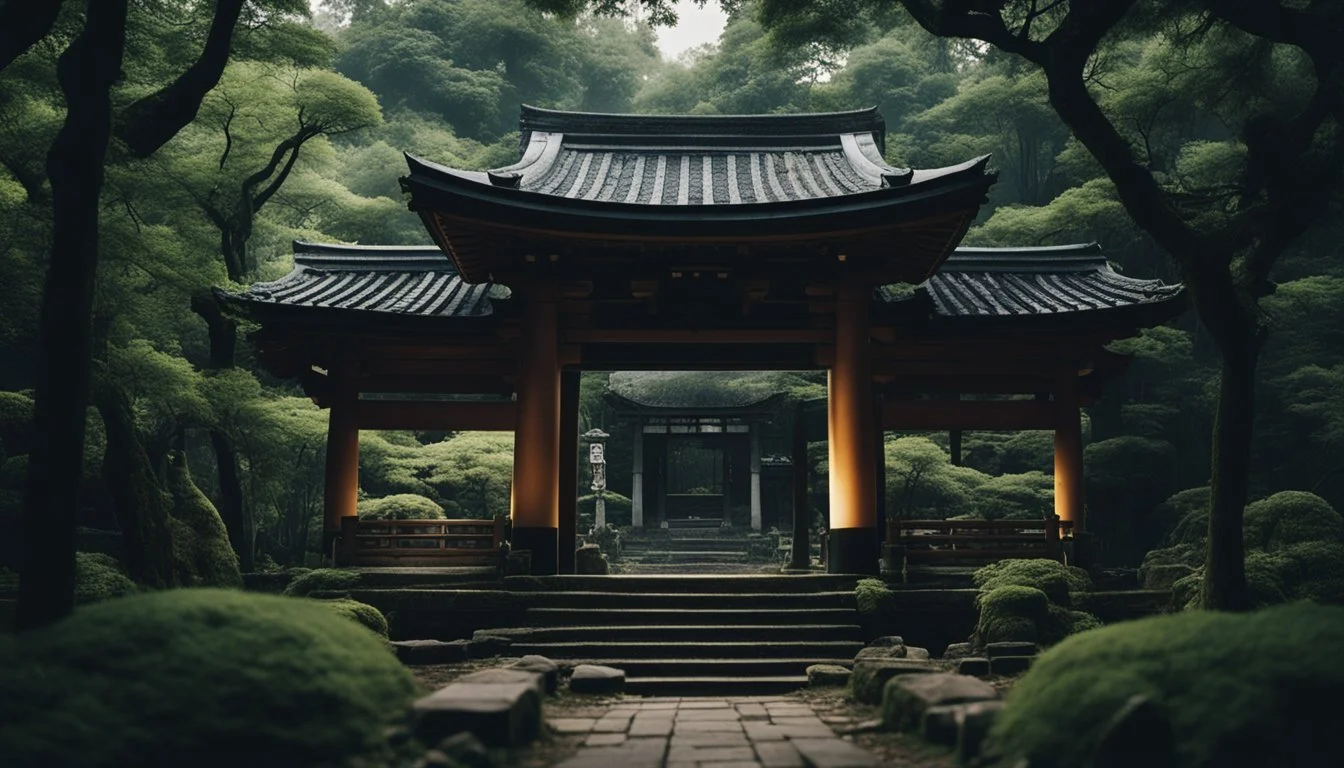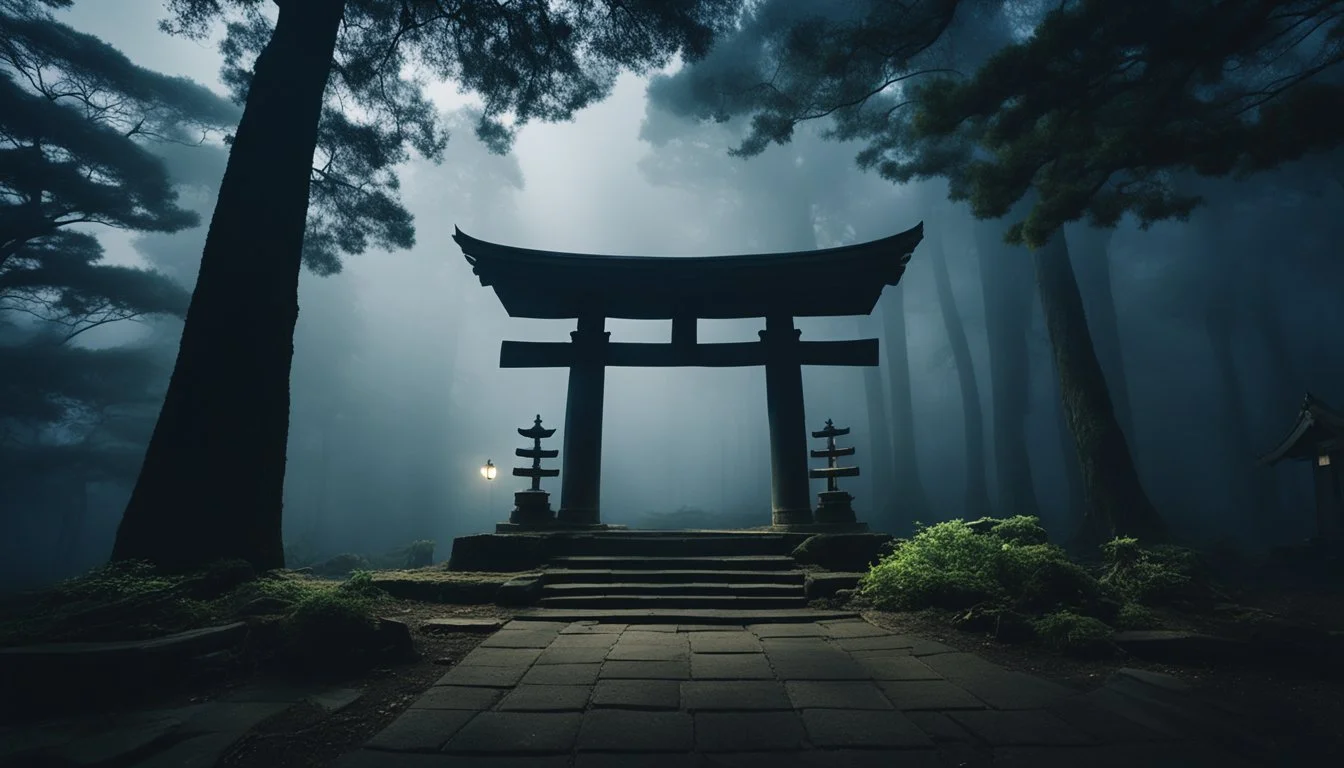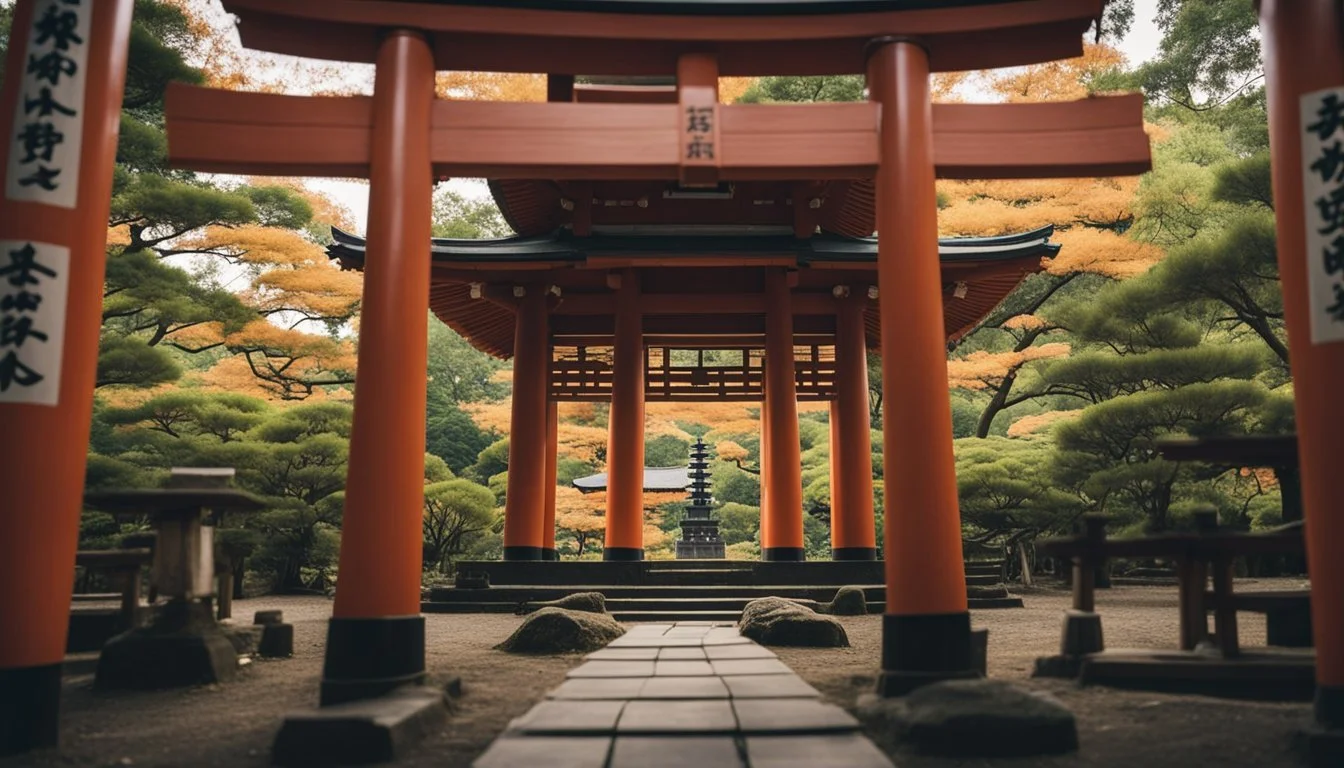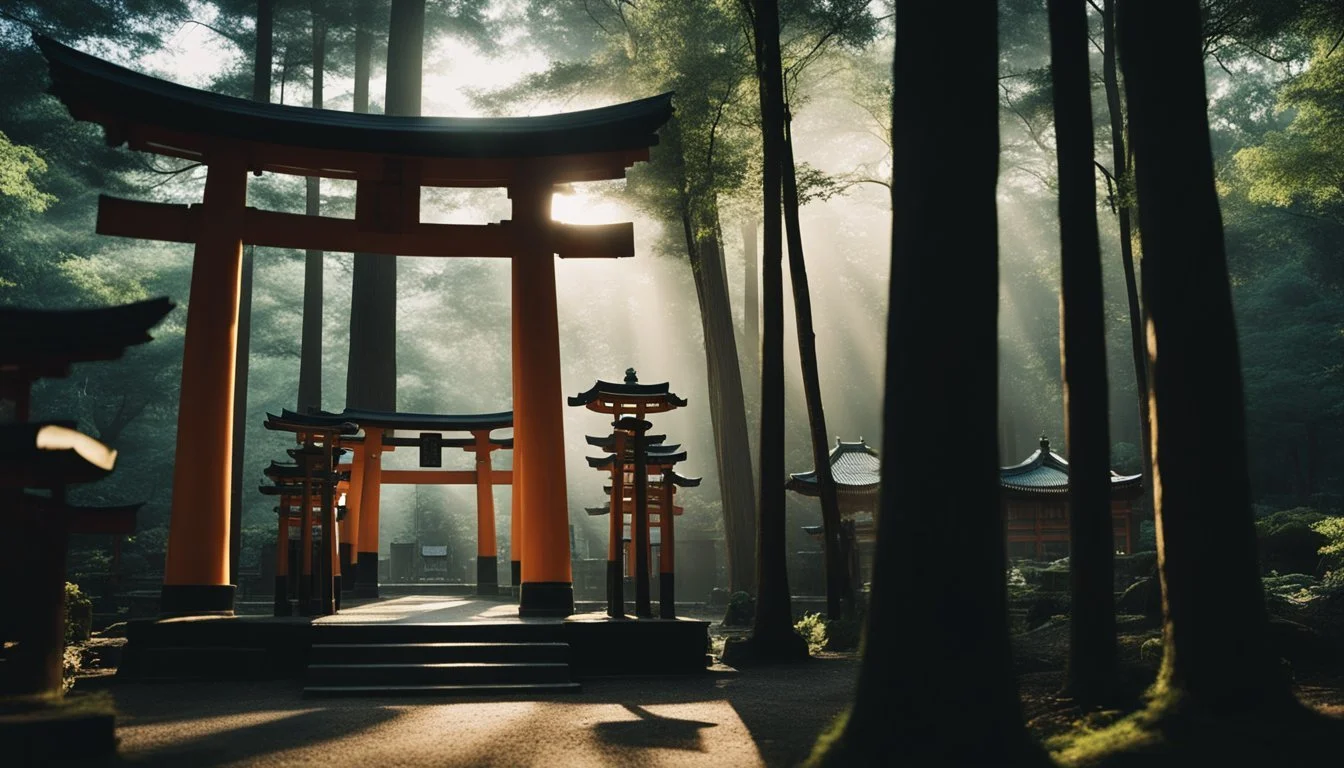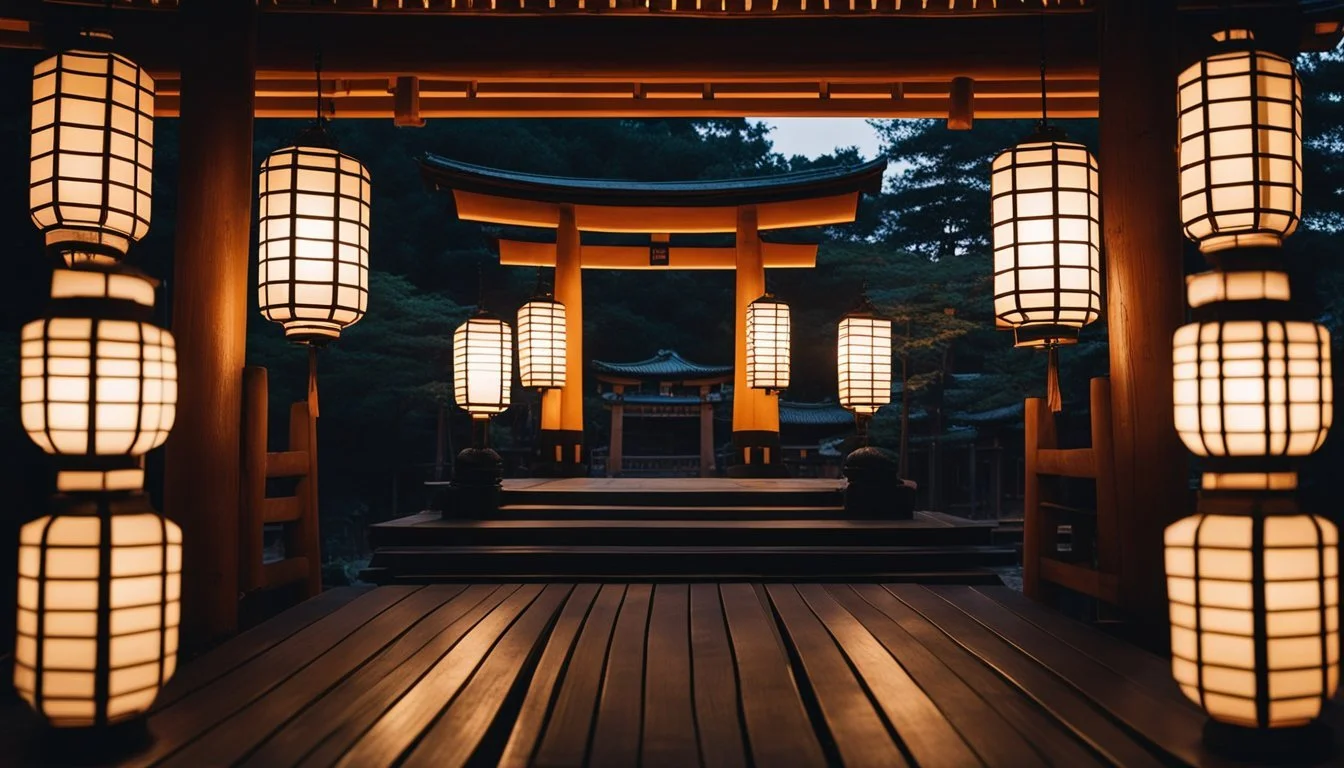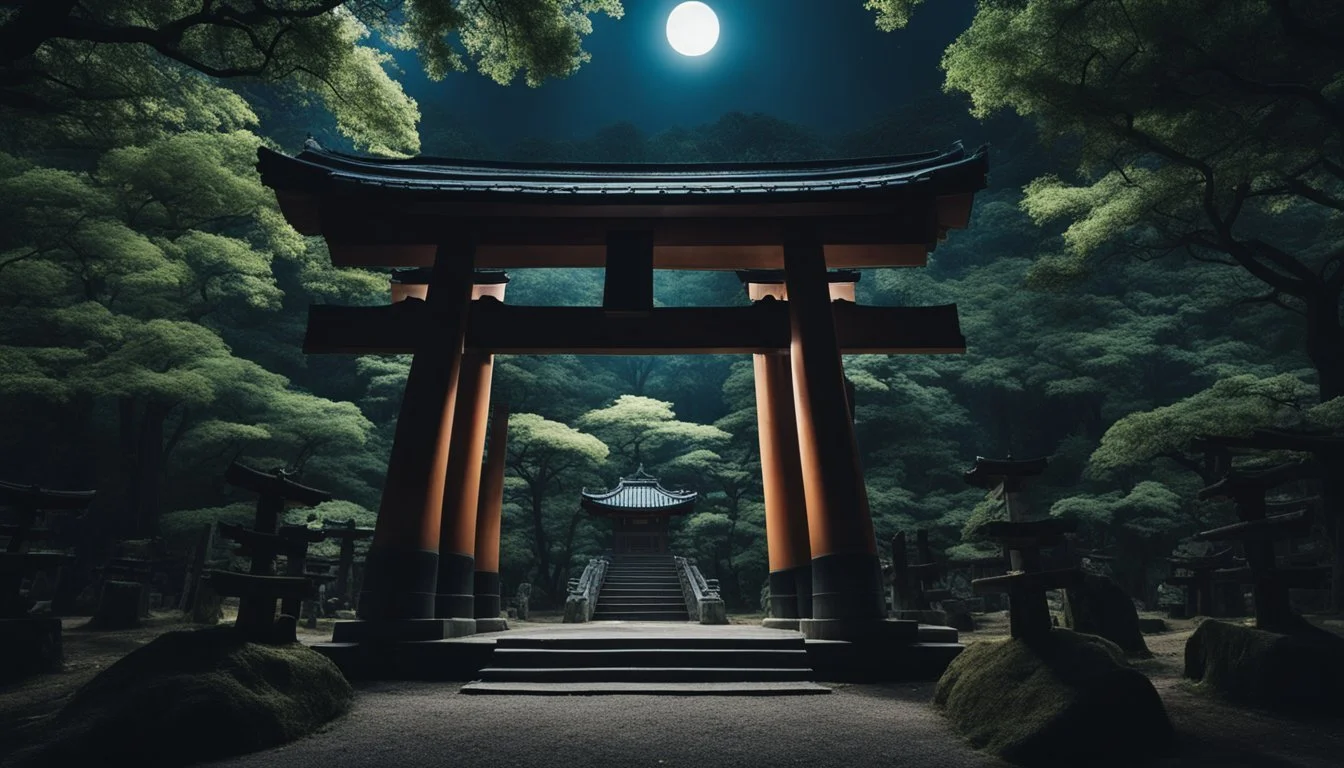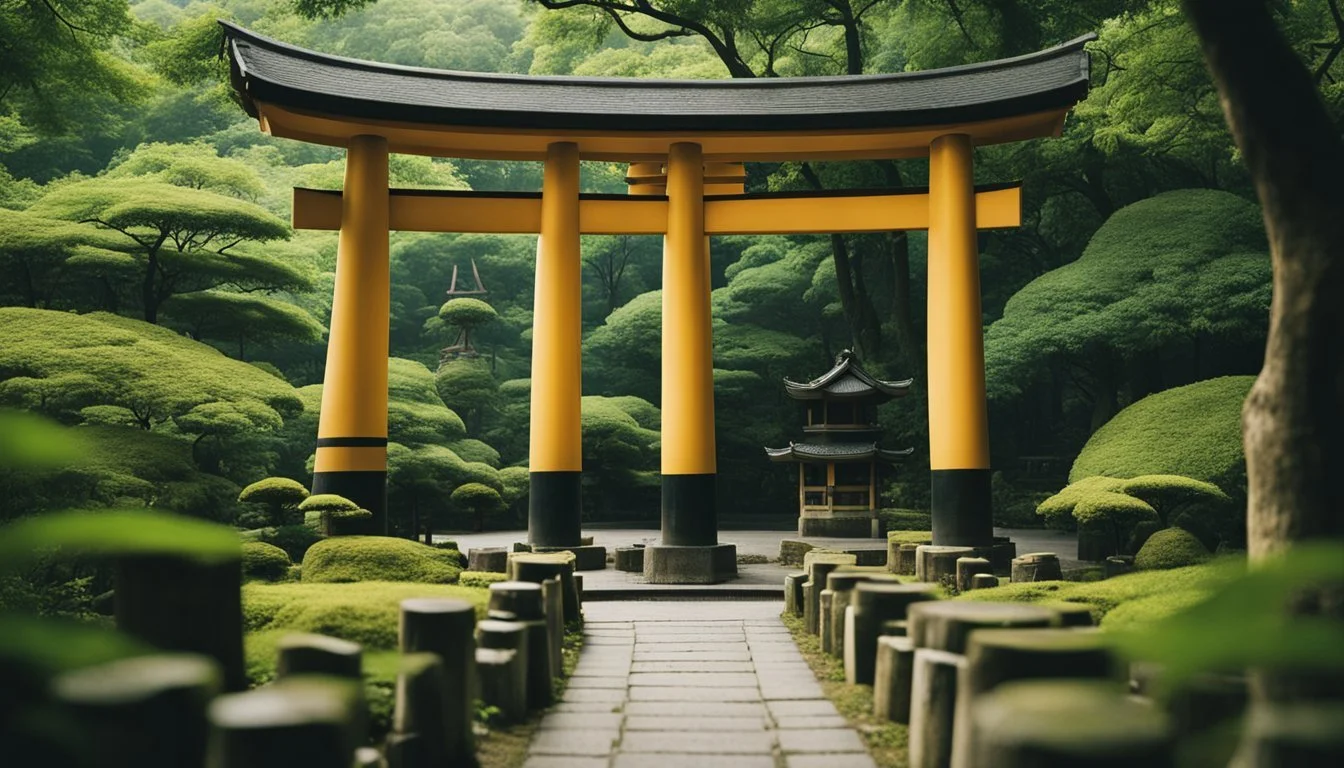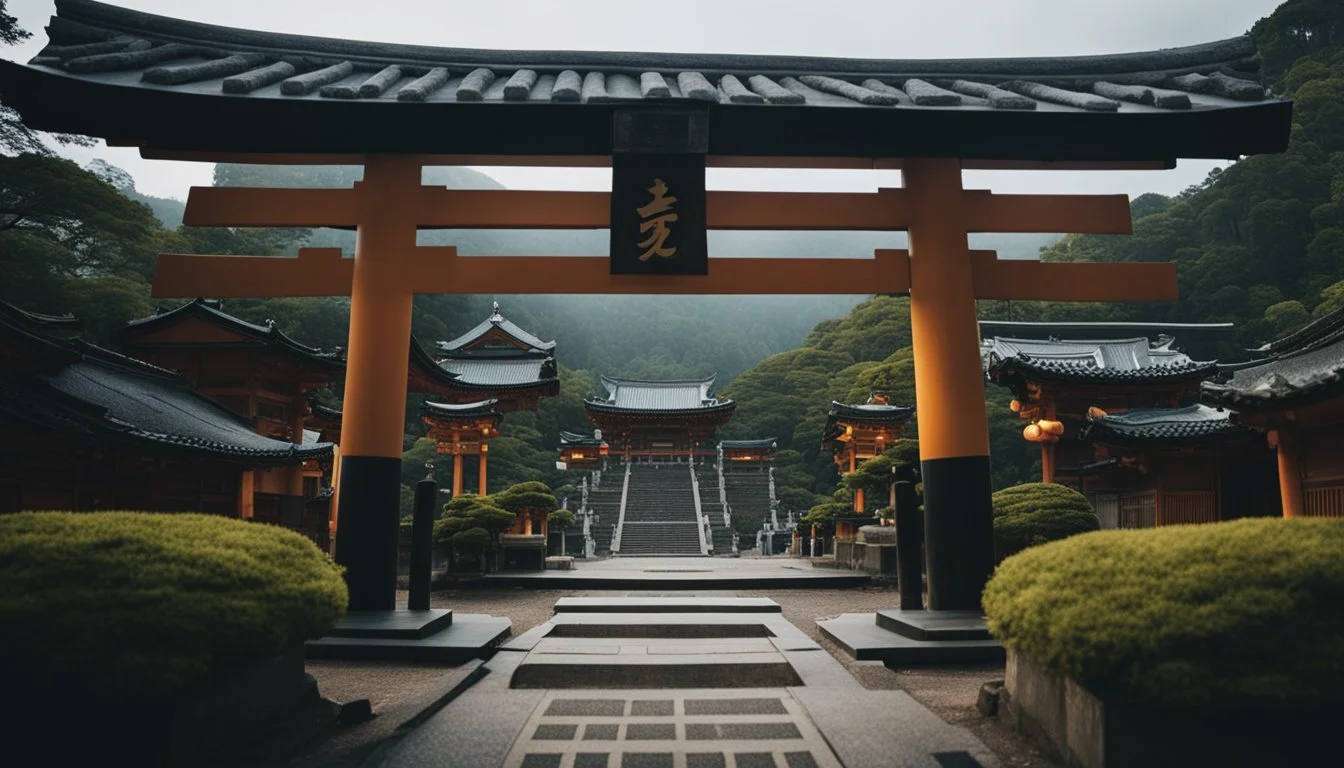10 True Crime Documentaries About Shinto Shrines
Intriguing Mysteries and Histories
True crime documentaries offer a compelling blend of mystery, cultural insight, and historical context, making them an engaging genre for many viewers. When these stories intersect with the sacred world of Shinto shrines, they unveil an even more intriguing dimension that often goes beyond conventional crime narratives.
This article explores ten true crime documentaries focusing on Shinto shrines, providing a unique perspective on how these revered sites can be intertwined with enigmatic and sometimes unsettling events. By delving into these stories, viewers can gain a deeper appreciation for the cultural significance and the mystique surrounding these spiritual locales in Japan.
1) Murder at the Shrine: The Yamagata Mystery (2019)
In the quiet town of Yamagata, Japan, tranquility was shattered by a grisly murder at a local Shinto shrine. A respected priest was found dead under mysterious circumstances.
The film delves into the investigation, unearthing hidden tensions within the community.
Interviews with locals and experts provide insight into the cultural significance of the shrine.
The documentary captures the interplay of tradition and modernity in a rural setting. The filmmakers present various theories and potential motives behind the murder. Stunning visuals of the shrine and its surroundings add depth to the narrative.
For those intrigued by crime stories rooted in cultural contexts, this film offers a compelling watch.
More information can be found on IMDB.
2) Spirits of the Sacred Grounds: True Crime at Shinto Shrines
Exploring the intersection of spirituality and crime, "Spirits of the Sacred Grounds" delves into chilling true crime stories that take place at Shinto shrines. These films reveal mysterious and often sinister events within these sacred spaces.
The Fox's Curse (2018): This documentary examines the eerie legend of a fox spirit haunting a Shinto shrine, leading to a series of unexplained disappearances. IMDB
The Kami Killer (2020): Following the case of a serial killer targeting shrine visitors, this film delves into the complex relationship between modern crime and ancient beliefs. Wikipedia
Sacrifice in the Sakaki (2019): Investigating the ritualistic murder found at a shrine, the documentary uncovers dark secrets tied to the sacred sakaki tree. IMDB
Curse of the Torii Gates (2021): Centered on the mysterious deaths near Fushimi Inari Shrine's torii gates, this film explores the thin line between veneration and fear. Wikipedia
The Haunted Honden (2017): A chilling look into the haunted honden of an ancient shrine, where a series of supernatural occurrences lead to a crime investigation. IMDB
Kami’s Revenge (2016): Focuses on a shrine where a tragic past provokes a vengeful spirit, culminating in a modern-day crime spree. Wikipedia
3) Rituals and Ruins: The Dark Side of Shinto Shrines
Shinto shrines, known for their beauty and spiritual significance, also have a rarely discussed dark side involving rituals and historical events.
Some shrines are linked to ancient rituals that included human sacrifices. These practices were believed to appease the kami and ensure prosperity. Although such rituals are no longer practiced, historical accounts make them a subject of true crime documentaries.
In the aftermath of World War II, many shrines were disbanded or repurposed by the Allied occupation forces. This led to conflicts and violent events as communities grappled with losing their spiritual centers. These events are documented through various crime series, highlighting the struggles faced by Shinto followers.
One such documentary explores mysterious deaths and disappearances around specific shrines. These cases often involve unexplained phenomena and alleged curses, attracting both believers and skeptics.
Some documentaries investigate crimes committed using the veil of sacred rituals. These feature individuals who exploit religious beliefs for personal gain, ending in tragic outcomes.
These stories illustrate the complex and sometimes dark history surrounding Shinto shrines, offering viewers an intriguing look at the intersection of faith and crime.
4) Haunted Shrines and Heinous Crimes
The Inari Shrine Murders (2015)
This documentary explores a chilling series of murders linked to Japan's famous Fushimi Inari Shrine. It investigates how historical reverence for the shrine intertwined with modern-day criminal activities. The filmmakers delve into local legends and real-life horror stories that left a lasting impact on the community.
Spirits of the Shrine: The Yamato Case (2018)
This film examines the unexplained events surrounding Yamato Shrine. Known for its haunted reputation, the shrine became the backdrop for a brutal crime in 2010. The documentary seeks to uncover the complex relationship between spirituality, folklore, and heinous acts of violence.
Ritualistic Revelations: The Shrine Killings (2019)
Focusing on a string of ritualistic killings near various Shinto shrines, this documentary delves into the minds of the perpetrators. It connects ancient rituals with contemporary criminal practices, offering a disturbing yet intriguing perspective on how sacred places can become sites of crime.
The Haunted Shrine: Case of the Missing Priest (2020)
This documentary covers the mysterious disappearance of a priest from a reputedly haunted shrine. The film investigates the unsettling events that followed, blending paranormal lore with gripping crime investigations. The eerie atmosphere and historical context create a compelling narrative.
Fox Spirits and Foul Play: The Kitsune Shrine (2021)
The Kitsune Shrine, known for its association with fox spirits, is the focal point of this chilling documentary. It explores a grisly murder that shocked the local community and looks into how ancient myths played a role in the investigation. The film combines folklore with forensic analysis in an engaging way.
5) The Shrine Murders: A Forgotten History
The Shrine Murders: A Forgotten History (2023) is a riveting documentary that dives into the little-known but chilling occurrences at some of Japan's most revered Shinto shrines. The film meticulously explores historical records to uncover the dark stories that have been overshadowed by the shrines' cultural and religious significance.
One notable case featured in the documentary is the murder that occurred at the Meiji Shrine in Tokyo. The incident, which happened decades ago, was sensationalized in the media at the time but quickly faded from public memory.
The documentary provides interviews with historians and experts who discuss the possible motives and the impact of these crimes on the local communities. These crimes often involved complex social and political factors, making them more than just criminal acts but significant historical events.
The Tsubaki Grand Shrine of America, hidden away on 25 acres outside Granite Falls, is another focus. This shrine, despite its peaceful appearance, has its own share of dark tales, including a mysterious death that baffled the local authorities.
The film also covers the bureaucratic and administrative aspects of dealing with such incidents, which often involve the Association of Shinto Shrines. This body oversees around 80,000 shrines in Japan and has the challenging task of preserving the sanctity and safety of these religious sites.
The documentary combines archival footage, expert interviews, and dramatic reenactments to bring these forgotten stories to life.
For more information on the film, visit its IMDb page.
6) Curse of the Sacred Sites: Shinto's Dark Secrets
This documentary explores the lesser-known curses and legends associated with Shinto sacred sites. It delves into the rituals that were believed to protect these sites from malevolent spirits and the consequences when these rituals were neglected.
The film provides a detailed look at ancient practices meant to appease kami (spirits) and the folklore surrounding these rituals.
Historical accounts and modern interpretations are used to examine the eerie tales that persist around certain shrines. The documentary features interviews with Shinto priests who share stories of unexplained events and the steps taken to cleanse the sites of misfortunes.
Viewers can expect to see a mix of historical footage, dramatizations, and expert commentary. The approach is factual, avoiding sensationalism while providing a compelling narrative. The film serves as an educational piece on how historical and cultural factors have shaped the legends of curses around Shinto sacred sites.
Released in 2010, it remains a noteworthy contribution to the genre of true crime documentaries intertwined with religious and cultural insights.
7) From Worship to Warfare: Crimes in Shinto Shrines
Shinto shrines, symbols of peace and spirituality, have not always been immune to crime. These sites have witnessed incidents that shatter their serene image. Some documentaries reveal these darker aspects, emphasizing the contrast between worship and crime.
The 2006 documentary Spirits of the Dead: Crimes in Japanese Shrines examines a series of grave robberies in sacred sites. The film explores the motivations behind these crimes and their impact on Shinto practitioners. IMDb
Desecrated Sanctuaries: Shinto Shrines and Vandalism (2011) dives into incidents of vandalism against sacred structures. The documentary captures the efforts of local communities to restore and protect their cultural heritage. IMDb
Shadow of the Fox: Murders in Shinto Shrines (2009) highlights a chilling case involving a series of murders near shrine grounds. Investigations uncover complex motives rooted in personal vendettas and disrupted local traditions. IMDb
These documentaries, while disturbing, provide critical insights into the vulnerabilities of even the most sacred places in Japan. They also underscore the resilience of communities in preserving their cultural identity amidst adversities.
8) The Sacred and the Sinister: True Crime Stories of Shinto Shrines
Shinto shrines are often seen as places of peace and spiritual significance. However, some documentaries reveal a darker side. These films explore true crime stories linked to these sacred sites.
1. "The Kami's Curse" (2020)
This documentary delves into a murder that took place within a famous Shinto shrine. The victim, a revered shrine keeper, was found dead in mysterious circumstances. Investigators suspected ritualistic motives behind the crime. More Info.
2. "Inari's Betrayal" (2018)
This film examines a string of thefts at Fushimi Inari Shrine, renowned for its thousands of torii gates. The documentary follows the investigation and eventual capture of the culprits. More Info.
3. "Torii Trails of Terror" (2019)
A haunting look at a series of disappearances linked to the trails behind a rural Shinto shrine. This documentary uncovers the tragic stories of those who vanished and the eerie legends surrounding the shrine. More Info.
4. "Sacred Shadows" (2021)
Focusing on the disturbing murder case in a shrine located in a dense forest, this film highlights the intersection of sacredness and violence. The story is as chilling as it is intriguing. More Info.
5. "Spirit of Vengeance" (2022)
This documentary explores the revenge-driven murder of a high-ranking shrine priest. The film dives deep into the hostile conflicts within the shrine's community. More Info.
6. "The Shrine's Secret" (2017)
Detailing a complex conspiracy within a shrine, this documentary uncovers financial corruption and its deadly consequences. More Info.
7. "Kami Sacrifice" (2016)
A chilling true crime story about a supposed ritualistic sacrifice carried out at an ancient Shinto shrine. The film examines the myths and facts behind the events. More Info.
8. "Fallen Priests" (2019)
This documentary covers the shocking tale of a group of priests involved in illegal activities, leading to a gruesome murder within the shrine's premises. More Info.
9) Unholy Acts: True Crime Investigations of Shinto Shrines
This documentary takes a chilling look at various crimes committed at and around Shinto shrines. Each story reveals a different aspect of these sacred places being tainted by unholy acts.
One case examines the mysterious vandalism of historical shrine artifacts, leading investigators to a complex network of black market dealers.
Another focuses on the theft of offerings meant for the kami, which opens up a deeper investigation into organized crime rings targeting religious sites.
A particularly disturbing case involves a series of violent incidents at a shrine, where attendees and clergy were attacked, leaving the community shaken and demanding justice.
The documentary also delves into the psychological profiles of those who commit these crimes, providing viewers with a nuanced perspective on the motivations behind such unholy acts.
For more information, visit IMDb.
10) Mysteries of the Sacred: Crimes at Shinto Shrines Documented
Exploring the depths of Japan's heart, these documentaries shed light on eerie and perplexing crimes that occurred in or around Shinto shrines. Each film brings a unique perspective on the sacred and the sinister.
1. Torii Shadows (2010)
An investigative look into a series of thefts from religious artifacts within shrines. This documentary reveals how these crimes challenge the community’s faith. More info
2. Haunting at Inari (2012)
Focusing on the infamous Fushimi Inari Shrine, this film explores unsettling disappearances connected to the site’s thousand torii gates. More info
3. Sacred Secrets (2014)
Delving into a string of mysterious deaths near several ancient shrines, this documentary discusses possible connections to spiritual beliefs. More info
4. Guardian's Betrayal (2016)
An inside view on a scandal involving shrine caretakers accused of embezzlement and betrayal of public trust. More info
5. The Shrine Murders (2018)
Examines a gruesome murder that took place in the precincts of a Shinto shrine, raising questions about the intersection of faith and crime. More info
6. Crimes in Kami (2019)
This documentary provides a historical overview of various crimes related to the theft and desecration of sacred objects dedicated to the kami (deities). More info
7. The Vanishing Priestess (2020)
A gripping story about the unexplained disappearance of a high-ranking shrine maiden, sparking rumors and a tense investigation. More info
8. Echoes of the Past (2021)
Investigates the theft of national treasures from prominent Shinto sites and their impact on cultural heritage. More info
9. Rituals of Crime (2022)
This film looks into the dark rituals and ceremonies performed unlawfully, leading to a series of tragic events within shrine boundaries. More info
10. Sacred Veil (2023)
Uncovering a hidden network of illegal activities masking as religious rituals, this documentary highlights the complexities of law and tradition. More info
Historical Background of Shinto Shrines
Shinto shrines are central to the practice of Shinto, one of Japan's oldest religions. These structures serve both religious and cultural purposes, symbolizing the unique relationship the Japanese have with nature and their divine spirits or kami.
Origins and Evolution
The origins of Shinto shrines trace back to ancient Japan when the local people built simple structures to enshrine their kami. These deities were believed to inhabit various natural elements, such as mountains, rivers, and trees.
Over centuries, these primitive sanctuaries evolved into more complex and ornate structures. The practice formalized significantly during the Yayoi period (300 BCE-300 CE), reflecting the societal shift toward agriculture and permanent settlements.
In the following eras, particularly the Nara period (710-794) and the Heian period (794-1185), Shinto shrines became more institutionalized. Emperors and nobles patronized these sites, interweaving the shrines with state governance and culture. The architectural style of shrines also diversified, incorporating elements from Buddhist temples, which were introduced to Japan during this time.
Cultural Significance
Shinto shrines are deeply embedded in Japan's cultural fabric. They are not only places of worship but also pivotal communal hubs. Rituals conducted at these shrines often mark significant life events, such as births, marriages, and New Year celebrations.
The kami enshrined in these locations represent various facets of life and nature, from agriculture and business to prosperity and protection. Notably, the Fushimi Inari Shrine, renowned for its thousand torii gates, emphasizes the significance of Inari, the kami of rice and commerce.
During the Meiji Restoration in the late 19th century, Shinto was codified as the state religion, reinforcing the role of shrines in public life. Despite the disestablishment of State Shinto after World War II, these sacred sites continue to be vital to Japanese identity and heritage today.
In contemporary times, the architecture, rituals, and traditions of Shinto shrines remain a testament to Japan's deep-rooted spiritual and cultural legacy.
True Crime Documentaries as a Genre
True crime documentaries explore real-world criminal cases, offering insight into the complexities of human behavior and the judicial process. This genre captivates audiences by blending narrative storytelling with factual information.
Popularity and Impact
True crime documentaries have surged in popularity due to their compelling narratives and detailed investigations. Series like Night Stalker: The Hunt for a Serial Killer and Cocaine Cowboys: The Kings of Miami demonstrate the genre's ability to attract large audiences and spark public interest.
The genre influences public perception of justice and crime. It often brings attention to lesser-known cases, sometimes prompting re-examinations or reopenings of investigations. Major streaming platforms contribute significantly to this trend, providing easy access to a vast array of true crime content.
Ethical Considerations
While popular, true crime documentaries raise ethical questions. They balance the need to inform with the responsibility to respect the victims and their families. Sensationalism can sometimes overshadow respectful storytelling, as seen in critiques of Night Stalker: The Hunt for a Serial Killer.
Filmmakers must navigate privacy concerns, potential harm to ongoing investigations, and the glorification of criminals. Ethical true crime productions strive to present information accurately and thoughtfully, ensuring that narratives do not exploit or trivialize real human suffering.
Intersection of Shinto Shrines and True Crime Narratives
The intersection of Shinto shrines and true crime narratives explores how sacred sites entwine with criminal activities. These documentaries often delve into the cultural significance and common themes that arise from such intersections.
Cultural Context
Shinto shrines represent more than religious sites; they are symbols of divine presence in Japan. Documentaries often highlight the cultural reverence for these shrines. Shintoism, rooted in deep spiritual beliefs, influences Japanese daily life and values.
Such narratives contextualize crime within the sacredness of shrines, emphasizing the cultural impact. By understanding the cultural backdrop, viewers gain insight into the gravity of crimes occurring at these revered locations. The sanctity and historical importance add a layer of complexity to the crimes.
In such stories, the juxtaposition of sacred spaces and criminal acts offers a stark contrast. This cultural perspective underscores the shock and betrayal felt within communities when crimes occur at these hallowed sites.
Common Themes
Several common themes emerge in true crime documentaries focused on Shinto shrines. Key among these is desecration. Crimes such as vandalism or theft of sacred artifacts highlight a profound disrespect for cultural and spiritual values.
Another recurrent theme is the clash between modernity and tradition. Some narratives explore how contemporary societal issues infiltrate these ancient, sacred spaces. This theme often reflects broader concerns about preserving cultural heritage amidst changing societal norms.
Furthermore, the presence of kami, or spirits, often plays a significant role. Crimes at shrines may invoke beliefs about spiritual retribution or disturbance of peace, adding a unique supernatural element to the narrative.
These themes help viewers understand the depth of the impact that crimes at Shinto shrines have, both culturally and spiritually.

